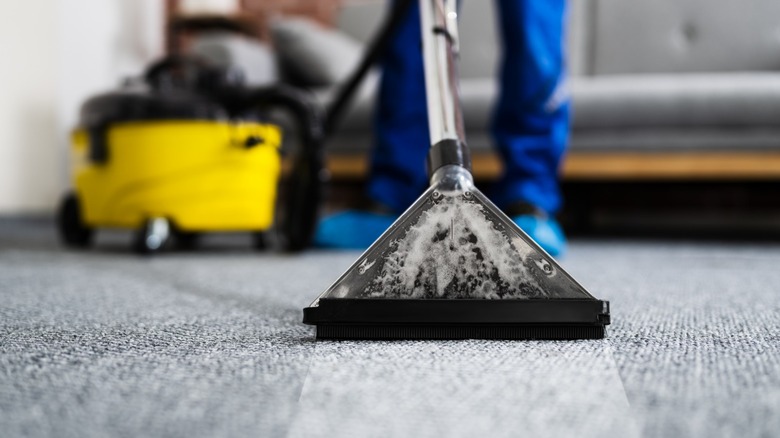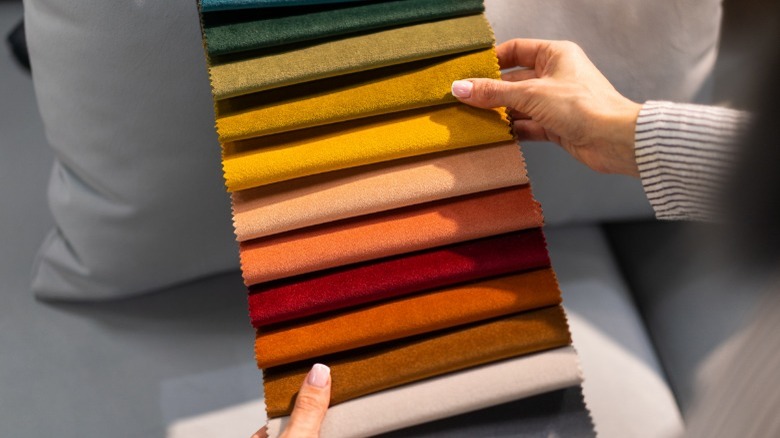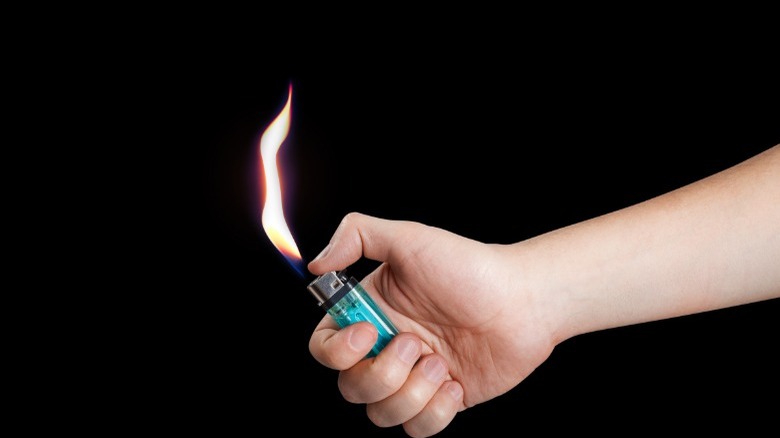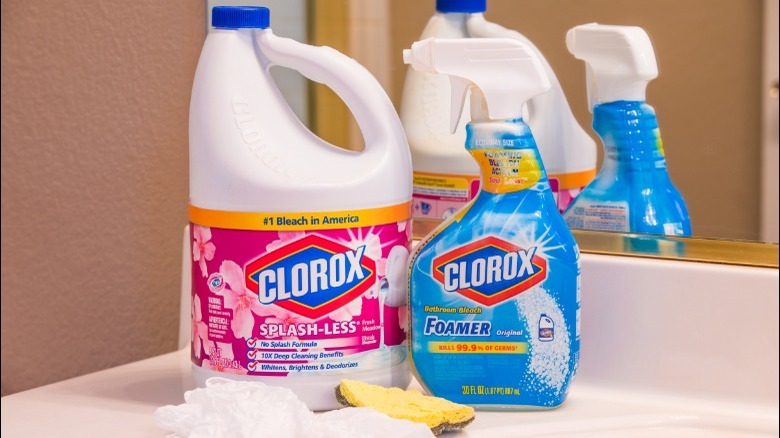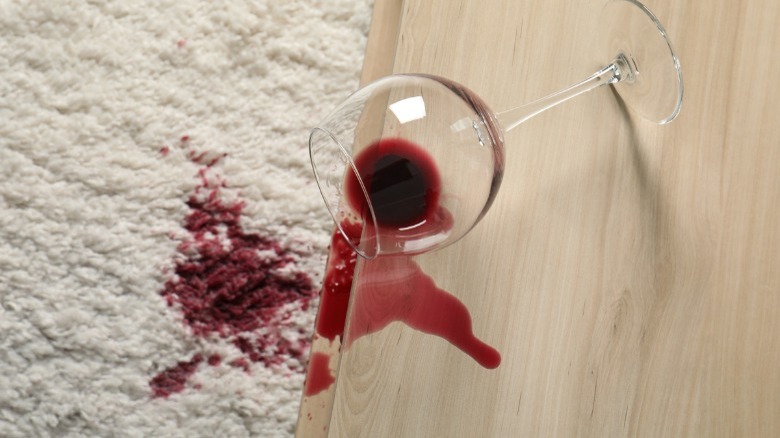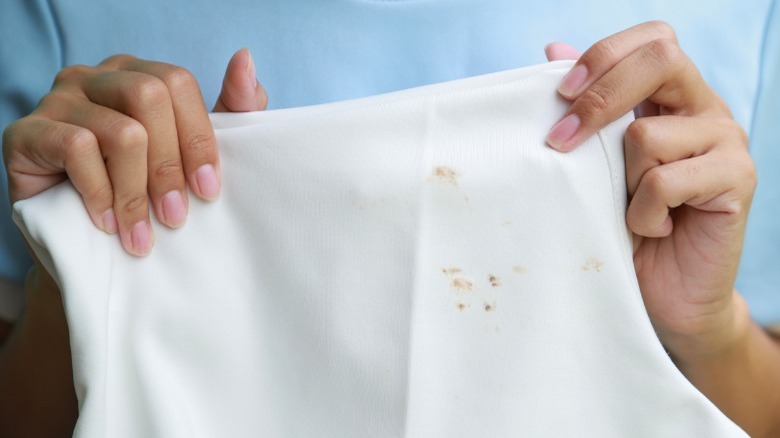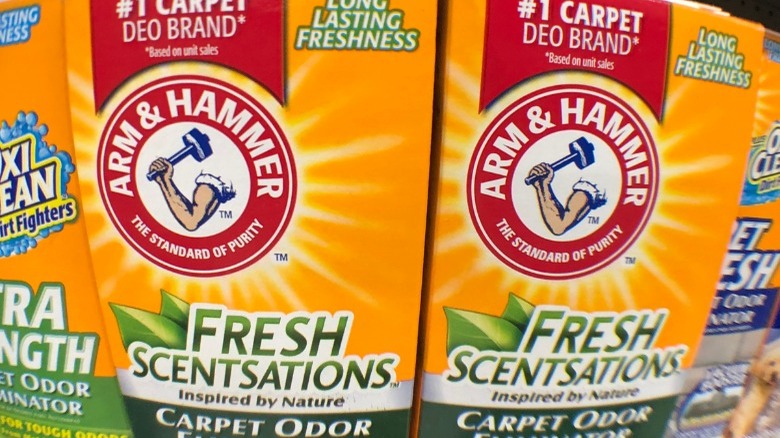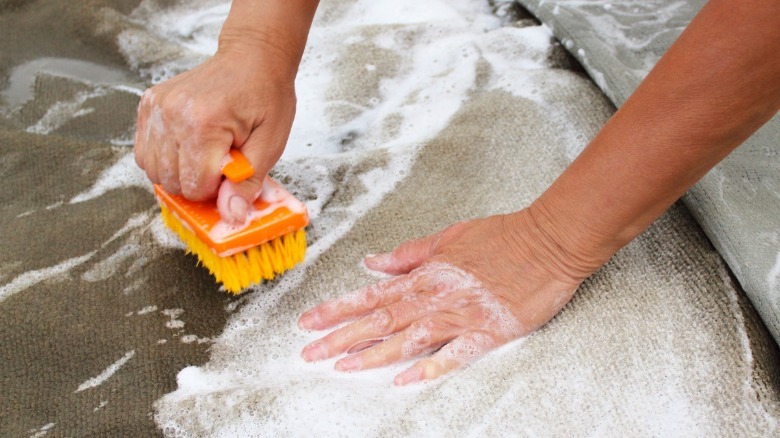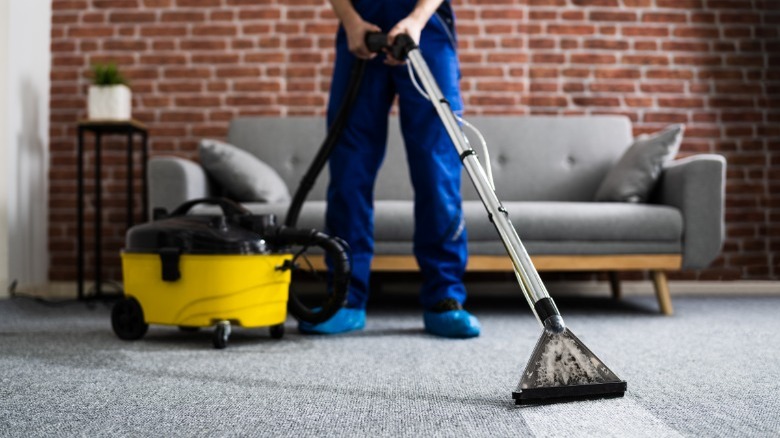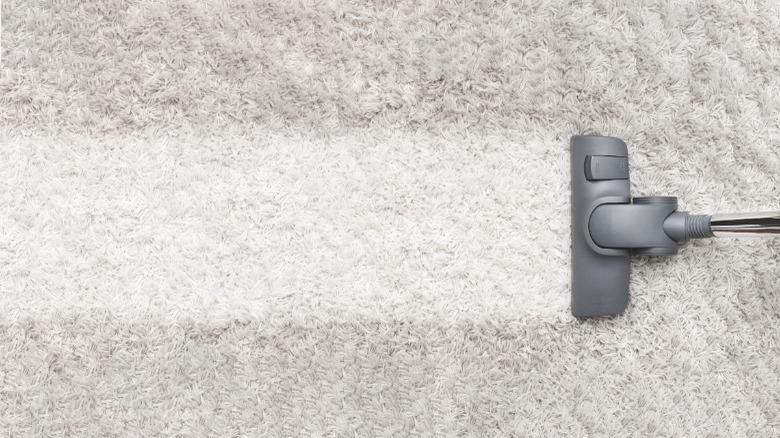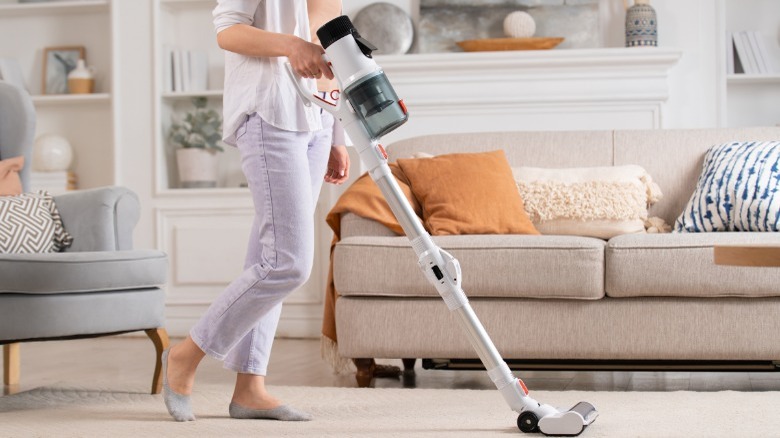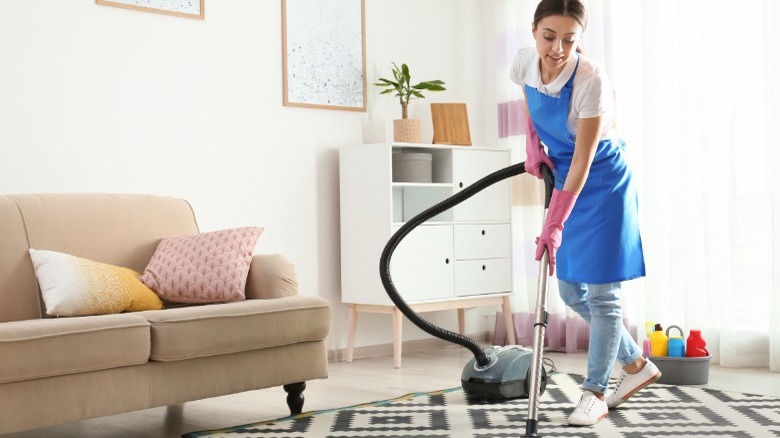Mistakes Everyone Makes Deep Cleaning Their Carpet
If you've decided that it's time to deep clean your carpet, it's a good idea to do some research first and make sure you're doing it right! Though it probably seems like basic common sense, you might be surprised to find there's a lot more to it than first meets the eye. For example, a lot of the care you take in between deep cleaning is going to affect how often you need to do it and how good the results are when you do. Overall success also depends on understanding the type of carpet you have so you know what cleaning agents can safely be used on them.
Everything from day-to-day maintenance to the products and equipment you use for deep cleaning has an effect on the final product, and using the wrong products can spell disaster for your carpets which can be costly to fix. Here are a few of the top mistakes to avoid when deep cleaning your carpet.
Not understanding the type of carpet fibers you have
There are four main types of carpet fibers. The most commonly used is polyester, then nylon, olefin (also called polypropylene), and wool. Most carpet fibers used today are synthetic. Let's briefly discuss each type and what to know about cleaning them. Polyester (also known as P.E.T. or polyethylene terephthalate) carpet is stain-resistant and easy to care for. It's recommended that you steam clean it once a year and use any product safe for synthetic fibers. Nylon is typically treated for some stain resistance. It requires steam cleaning once a year as well, but never clean nylon carpeting with products that have a pH higher than 10, since it can affect the color of the dyes used on this type of fiber.
Wool is the only natural carpet fiber on the list and is typically much more expensive than synthetic carpet. This means you'll want to be extra careful cleaning it. It's inherently stain resistant but vulnerable to mold and mildew. Its tendency to retain moisture means it cannot be steam cleaned. Wool is more susceptible to protein soils or stains and since it's more absorbent than others, any wet cleaning treatments should be done with extreme caution. Olefin or polypropylene is made to be a synthetic alternative to wool without the drawbacks of real wool. As such, it's hydrophobic and resists mold, mildew, and stains. By knowing the different materials, you can choose the best one for your household and the way you use carpeted areas of your home.
Not doing the burn test if unsure
If you aren't sure what type of fiber you have, there's an easy way to find out. Effective cleaning starts with knowing what type of fiber you're dealing with, enabling you to select the right cleaning product for the job. If you don't, you could make a mistake that can shorten the life of your carpet. You'll need to do a burn test on one of the carpet fibers. Choose a spot that no one sees and cut a strand of fiber close to the bottom. You only need one strand, so use a pair of tweezers to hold it as you cut. Take the strand outside to perform the test, and keep in mind how important it is to pay very close attention to exactly what happens when you light it on fire with a lighter.
The strand will likely arch away from the flame, which indicates a synthetic fiber. Each type has a specific way it burns. Polyester has an orange flame with black smoke and a sweet odor that leaves behind a shiny, firm bead. Nylon burns blue at the base and orange at the tip, smells like celery, and leaves behind a firm gray or brown bead. Olefin burns very similar to nylon but smells like tar and leaves a firm brown or tan colored bead. If you're dealing with wool, it smells like burnt hair and leaves behind only ash. Knowing the fiber type is important to using the right chemicals on your carpet when cleaning it. Don't make the mistake of skipping the burn test if you're unsure what carpet fiber you have.
Using the wrong products
Although there are some great DIY recipes out there for carpet cleaning solutions, there are still quite a few products that should not be used on carpets. For example, bleach is one of these and can permanently discolor and fade the carpet. Another is laundry detergent, mostly because it can't be rinsed out thoroughly enough. Ammonia is also a no-no and can cause damage to both synthetic and wool fibers, plus the fumes are toxic. Hydrogen peroxide is another bad idea for carpets, as it can cause discoloration and is not effective anyway.
Abrasive cleaners should be avoided at all costs, as they can cause permanent damage to carpet fibers. There are many DIY recipes for getting out different types of specific stains, but it is very important not to use anything that isn't safe to use on whatever carpet fiber type you have. Sometimes you can use small portions of the products listed here if they're diluted with other ingredients for specific stains, but it's important to do so with extreme care. Always read the warnings and instructions on any product before using it on your carpet.
Not treating stains right away
It's important to treat any stains or spills right away so they don't have the chance to set in. This is one of the most important things to remember when cleaning stains from your carpets. The faster you're able to get the stain off the carpet, the less of a chance it has to set into the fibers or spread to a larger area. There is no miracle stain remover that works for all substances, so you'll need to learn the best method for your particular stain and carpet. And the longer the stain remains, the higher the chance it may not be able to be removed at all.
When a spill first happens, it sits on the surface of the carpet fibers. As time goes by, the stain begins to soak farther into the fibers and ultimately into the backing as well. Once the stain has been soaking in for a bit, the molecules have the time to react with each other and cause irreparable damage like discoloration or wicking. Leaving the spill can also cause mold growth. Time really is of the essence! Don't make the mistake of not treating stains when they happen or you could end up with permanent damage to your carpet.
Rubbing instead of blotting stains
When you clean stains from your carpet you'll need to be very careful not to rub. Although it might seem natural to use elbow grease to try to scrub out carpet stains, in this case, that will only make them worse. As soon as a spill happens, first get the bulk of it off the surface with a clean, dry, white cloth or plain white paper towels. From the beginning, just blot the spill instead of rubbing it. Absorb as much of it into the cloth as possible. Rinse with warm water when finished and blot dry until the cleaning cloth has absorbed all the moisture.
From there, you can apply the adequate formula for whatever was spilled and your carpet type. Start with the minimum such as a vinegar and water solution and move to harsher methods from there if that doesn't work. Just keep in mind that rubbing the stain will often set it into the fabric permanently, so don't make this common mistake.
Over-using carpet deodorizer
Using carpet deodorizers like Carpet Fresh and baking soda-based products on your carpet is a bad idea for multiple reasons. One reason is that it can also ultimately ruin your vacuum cleaner by clogging the filters, eventually burning out the motor. Besides that, there's always residue left behind after vacuuming up the powder no matter how many times you go over it. The powder left behind acts like grit in the carpet fibers, rubbing together with them and causing additional wear and tear.
Besides that, these deodorizers can cause stains to set in and become permanent. Perhaps the worst drawback is they can cause what's known as wicking or crocking to the backing of your carpet which would result in permanent damage. The bottom line is that carpet deodorizers only cover up the problem. To really get rid of odors, you must remove the source. Don't make the common mistake of trying to cover up the problem with carpet deodorizers, as they will only make things worse in the long run.
Over-shampooing
Over-shampooing your carpets can make it difficult to rinse them properly and can leave behind chemicals that can damage your carpet. In fact, this is one of the most common mistakes people make when deep cleaning their carpets. Using too much soap is easy to do, especially if you know it's been a long time since they've been cleaned. It's a natural assumption that adding some extra soap will help clean extra dirty carpets. Unfortunately, that decision can end up costing you time and money when you have to do it all over again.
What ends up happening instead is too much sudsing, making it harder to rinse properly and thus dry thoroughly. Residue gets left behind that contains chemicals. Instead of your carpets getting cleaned and looking new again, they become a magnet that actually attracts dirt! Then it becomes like a catch-22: too much soap means you'll need too much water to rinse it properly, which means extended drying time or possibly other measures needed to dry it thoroughly enough. Make it easier on yourself and don't make the mistake of over-shampooing your carpets.
Over-saturating
Just like over-shampooing your carpets is a mistake, so is over-saturating it with water. Water and humidity can be a big problem for carpeting, as it invites mold and mildew onto the scene. Whenever you get moisture into the carpet, the most important thing to do is to get it dry as fast as possible. After shampooing the carpet, you'll need to give it plenty of time to dry before walking on it or moving furniture back into place. This can be accelerated by opening windows or bringing some fans into the room.
Another great tip is to put a dehumidifier in the room both before and after shampooing the carpets. It's also extremely important to vacuum the floors afterward to help make sure the carpeting gets completely dry. It only takes a small amount of moisture to promote mold growth and mildew beneath your carpeting. Keep this in mind at all times, especially since we've become all too familiar with the multiple health risks mold presents. Don't make this potentially grave mistake and over-wet your carpets.
Not spot-testing new products
Although it may seem elementary, you might be surprised at how many people overlook the obvious. Any time you use a new product on your carpet, always test a little bit in a spot that no one routinely sees, such as inside a closet or behind a door, or even underneath a piece of furniture. Wait for it to dry completely before checking for any discoloration or damage. Even if you've made sure you know what type of fiber your carpet is made from and which ingredients are safe to use, there is still always a chance of damage when using any chemical.
This is also true with any product, regardless of whether it says it's safe for your carpeting or if it says it doesn't stain or fade. Many factors can affect an otherwise unexpected chemical reaction when it comes to these things. Use a flashlight when you perform the spot test, inspecting the area carefully for any fading or differences. Don't use it if there is, and call a professional if necessary. This is the kind of mistake you'll definitely want to avoid.
Not vacuuming regularly, as well as before and after cleaning
Another common mistake people make is not keeping up a vigilant vacuuming routine. Between deep cleanings, it's crucial that you vacuum the carpet a minimum of once a week. This will remove dust, pet hair, and other debris and keeps the carpet fibers in a healthier condition. Vacuuming regularly also helps maximize the time between shampooing, since less dirt and debris will settle into the fibers.
Additionally, be sure to vacuum both before and after deep cleaning your carpet. In fact, it's even advised to vacuum after having your carpets professionally cleaned to help get that last little bit of dirt removed. Keeping your floors vacuumed is vital to extending the life of the carpet and helps pull all the moisture out after deep cleaning. To ensure that your vacuum is up to the job, be sure to regularly clean the filters and any agitator brushes. A clean vacuum helps you keep your carpets that much cleaner!
Not following professional cleaning instructions according to warranty
The last mistake we're going to discuss involves the warranty on the carpet. If you have recently purchased your carpeting or it is still covered by warranty, something you might want to think about is thoroughly reading the cleaning instructions and following them to the letter. Unfortunately, there are often many clauses that can void your warranty, and it pays to be informed about them before using any products on your carpet.
The warranty is often contingent on always having your carpets professionally cleaned. In these cases, if you attempt to clean them on your own, your warranty will be automatically voided. Incidentally, it's generally recommended that you have your carpets cleaned professionally at least once a year, whether you engage in DIY carpet cleaning in between or not. We hope this list of mistakes everyone makes deep cleaning their carpet will help you to avoid making them yourself!
